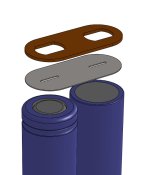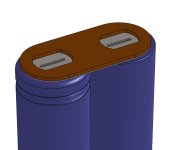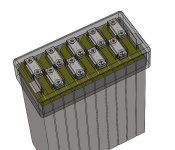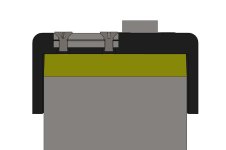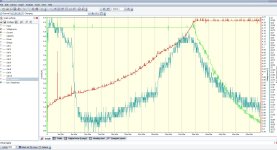laapmetot
100 mW
- Joined
- Feb 12, 2017
- Messages
- 44
hi guys, new member, I'm doing research for a >200Hp electrical track bike and am reading here for a while. My plan is to use a 96S20P pack that is able to utilize the potental of 35 amps batteries like the Sony US18650VTC5A for short peak bursts. Things I'm struggling with at the moment:
- battery type. I like the aforementioned one as it can draw 20 amps until empty without overheating, and allows for 35A peaks. capacity is not up to some others like the panasonic ncr19650b found in tesla's but it seems that capacity and amps dont combine too good.
- serial connections. the nickel strips dont seem to cut it on much more then 10-15 amps although some claim it can be done when using more strips on top of eachother. Copper seems much better, but a pain to weld as I read it. I see some weldless packs that got me thinking: looking into that. Would also allow for safe and easy (dis)assembly
- As I would do 4x 15 min sessions at the track, I need to charge in between. Ideally <1 hour to be back at >80%. Probably gonna need a 400V DC fastcharger
- safety. I could make low voltage subassemblies and disconnect them to work on safely.
- heat buildup. Its a large pack, and if its continuously discharged/charged I probably overheat it halfway of the day. Thinking to add aluminium strips between batteries and leading that outside of the pack with heat sinks. That would interfere with connection strips though
- BMS: 96S BMS dont seem to be readily available. Maybe I can use several, but how to link up? Still looking for that, orionBMS seems a valid option
gonna post some first designs soon, feel free to already comment/criticize
- battery type. I like the aforementioned one as it can draw 20 amps until empty without overheating, and allows for 35A peaks. capacity is not up to some others like the panasonic ncr19650b found in tesla's but it seems that capacity and amps dont combine too good.
- serial connections. the nickel strips dont seem to cut it on much more then 10-15 amps although some claim it can be done when using more strips on top of eachother. Copper seems much better, but a pain to weld as I read it. I see some weldless packs that got me thinking: looking into that. Would also allow for safe and easy (dis)assembly
- As I would do 4x 15 min sessions at the track, I need to charge in between. Ideally <1 hour to be back at >80%. Probably gonna need a 400V DC fastcharger
- safety. I could make low voltage subassemblies and disconnect them to work on safely.
- heat buildup. Its a large pack, and if its continuously discharged/charged I probably overheat it halfway of the day. Thinking to add aluminium strips between batteries and leading that outside of the pack with heat sinks. That would interfere with connection strips though
- BMS: 96S BMS dont seem to be readily available. Maybe I can use several, but how to link up? Still looking for that, orionBMS seems a valid option
gonna post some first designs soon, feel free to already comment/criticize


